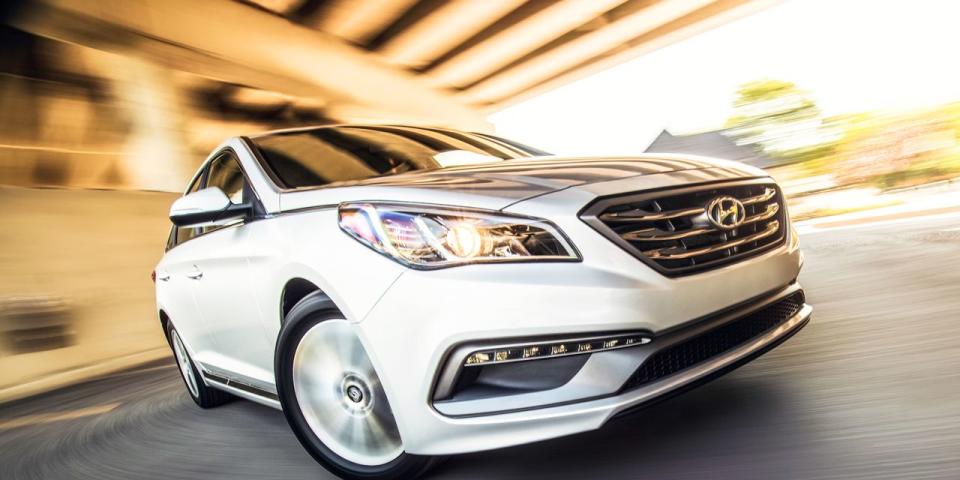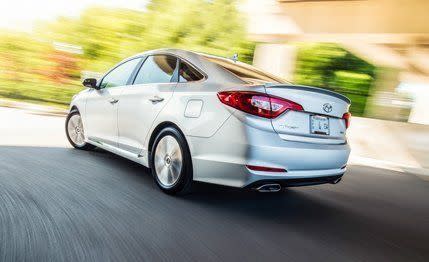Tuning Up: 2015 Hyundai Sonata 2.4L Tested

From the January 2015 issue of Car and Driver
The Hyundai Sonata's rise from an embarrassment to mediocrity to a truly competitive vehicle has taken, by car standards, a shockingly short time. Each generation made a meaningful stride over the one it replaced.
Hyundai’s Horatio Alger period might finally be drawing to a close. With the 2015 Hyundai Sonata, a retuned and restyled version of the last-generation car, Hyundai gets on with the less dramatic business of fine-tuning, which is nevertheless the key to lasting success in the industry.

Less dramatic would certainly describe the styling, both inside and out, of the new car. The Sonata’s face is now stripped of its rounded nose and flamboyant grille. The interior also has lost its swoopy shininess. Instead, the instrument panel is staid and businesslike.
Hyundai spent its update budget on adding sound-deadening materials, redesigning the multilink rear suspension, retuning the base 2.4-liter four-cylinder (the engine in our Sport-trimmed test car) to produce power lower in its rev range, and stiffening the front subframe’s bushings to improve steering feel and accuracy. Not exactly headline-grabbing stuff, but precisely the changes the car needed to compete with the best in its class.

The rear suspension now has two, instead of one, lower links per side. Combined with a fresh suspension calibration, this improves the car’s ride quality without sacrificing handling. Suspension tuning has long been a weakness at Hyundai, but the new Sonata’s body is nicely controlled in all but the most aggressive driving. Hyundai’s other constant nag—its inability to build and tune decent steering systems—is also less of an albatross around the neck of the new car. It might not rival the precision of the segment’s best entries (read Honda Accord and Mazda 6), but the steering now has a linear gain in effort and feels trustworthy in a way that the old car’s did not. The Sonata’s braking performance is excellent. A 165-foot stop from 70 mph puts the Sonata near the top of the class.
Likewise, the Sonata’s zero-to-60-mph sprint makes it one of the segment’s quicker four-cylinder cars. With 185 horsepower, the engine makes less rated horsepower than did the previous version, but we saw no degradation in performance. Though it might make power lower in the rev range, the engine still feels weak in the knees down low and gets gritty-sounding at the far end of the tach.

Except for a one-inch increase in rear legroom, most of the car is the same as before; e.g., same EPA-rated city and highway fuel-economy figures, same reasonable curb weight, same sensible price. In fact, at $23,985, our Sport model is only $15 more expensive than the base price of the Sonata SE we tested back in May 2012.
Fine-tuning might not be especially exciting, but, in this case, it has made for a subtly better Sonata.
You Might Also Like

 Yahoo Autos
Yahoo Autos 